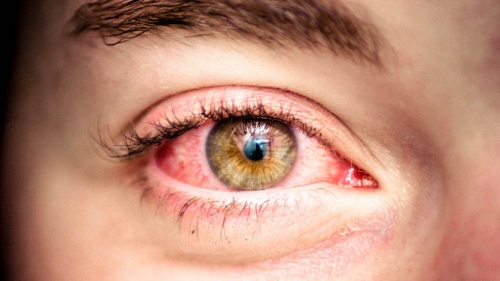Janet Davies, Queensland University of Technology; Connie Katelaris, South Western Sydney Local Health District, and Danielle Medek, ACT Health
If you’re one of the 15% of Australians who experience hay fever, you might have spent the last few weeks sneezing, itching and trying to control a runny nose and cloudy head.
Seasonal hay fever is usually caused by pollen from trees, grasses and weeds. In Australia, the major triggers are spring-flowering grasses such as ryegrass, but also summer-flowering Bahia, Bermuda and Johnson grasses.
So what’s the best way to manage your symptoms with medication?
Decongestants
Nasal decongestant sprays are effective for unblocking noses. They work very quickly by constricting the blood vessels in the lining of the nose. They’re also useful for opening the nasal passages to allow better access for other, more long-term nasal sprays, which we’ll discuss below.
But beware – they can’t be used for more than a few days before they cause “rebound” problems, where the nose becomes even more blocked.
Oral decongestant tablets aren’t as effective as nasal sprays. They’re most commonly used in combination with antihistamines. Together, these two drugs tackle most of the symptoms of hay fever.
Oral decongestants, such as pseudoephedrine, don’t cause rebound symptoms. But they’re stimulants and have unpleasant side effects such as sleep disturbance, irritability, raising blood pressure and urinary retention. So they’re for short-term use only.
Antihistamines
Antihistamines are the most commonly used over-the-counter medications. They’re very effective for alleviating itchy, runny noses and sneezing. But they’re less effective for blocked noses, which in the longer term, becomes the most prominent symptom.
There are two major classes: the older, sedating drugs, such as Benadryl; and the newer, less- or non-sedating drugs, such as Zyrtec, Claratyn and Telfast.
Sedating antihistamines are generally not recommended for hay fever as they cause problems aside from drowsiness. They have unfortunate interactions with alcohol and some other medications, leading to significant risks when driving or operating machinery.
The non-sedating antihistamines as a class are safe, effective and relatively quick-acting. Most act within one to two hours and have a 12-to-24-hour duration of action. There are no meaningful differences in safety and efficacy between the new antihistamines with active ingredients such as cetirizine, loratidine and fexofenadine.
Antihistamines work best when used before allergen exposure, if this can be predicted. So, if you’re going bush walking or picnicking on a warm windy spring day, take an antihistamine before venturing out.
Contrary to popular belief, our bodies do not “get used to“ antihistamines and their effectiveness does not lessen over time.
Two topical antihistamine sprays are available, both of which are effective and can work more quickly than tablets or syrups.
Antihistamine eye drops can ease the irritation and discomfort of itchy eyes more effectively than antihistamine tablets.
Nasal steroid sprays
These are the Rolls-Royce of treatments for hay fever and are especially useful for those experiencing regular or severe symptoms. They will dampen down all the symptoms of hay fever and are particularly good for managing nasal blockage in a safe manner.
A number of different nasal steroid sprays are available, some over the counter.
Because they’re a preventative treatment, they must be used on a daily basis to be effective. Ideally, treatment should start at the very beginning of the hay fever season to stop the development of allergic inflammation in the lining of the nose. They also need to be applied correctly to the nose in order to prevent irritation.
Contrary to popular belief, these are very safe medications despite the name “steroid”. Intranasal steroid sprays are applied and are active in the nose; only the smallest amounts reach the general circulation.
Nevertheless, their use should be monitored in children, particularly if they are also using inhaled corticosteroids as an asthma preventer medication.
The most common side effect of nasal steroid sprays is nasal bleeding. This can occur even if used correctly.
Immunotherapy (allergy ‘vaccines’)
Immunotherapy involves administering doses of allergen extracts at gradually increasing doses. The aim is to “re-educate” the immune system to down-regulate the allergic response, reducing allergic symptoms affecting the airways.
This treatment has been available for more than a century, but these days two forms are used: injections and sublingual (under-the-tongue) drops or tablets. This should be prescribed by an allergy specialist who determines the correct “vaccine” for the therapy.
Immunotherapy is expensive and is typically given for three to four years. However, in the long term, it may be more cost-effective than treatments just targeting the symptoms.
Immunotherapy is an effective treatment but there is still work to be done in refining pollen allergen immunotherapy to optimally cover the spectrum of grasses in Australia.
There are many safe and effective over-the-counter treatments for hay fever symptoms, though some treatments may suit you better than others. If you continue to experience symptoms, talk to your GP about other treatment options.

Janet Davies, Associate professor, Queensland University of Technology; Connie Katelaris, Professor of Immunology and Allergy, UWAS & Head of Unit, South Western Sydney Local Health District, and Danielle Medek, Ecophysiologist; junior medical officer, ACT Health
This article was originally published on The Conversation. Read the original article.
Photo by Dominik Moser/Flickr, CC BY-NC
The post Health Check: what are the options for treating hay fever? appeared first on Canberra CityNews.
